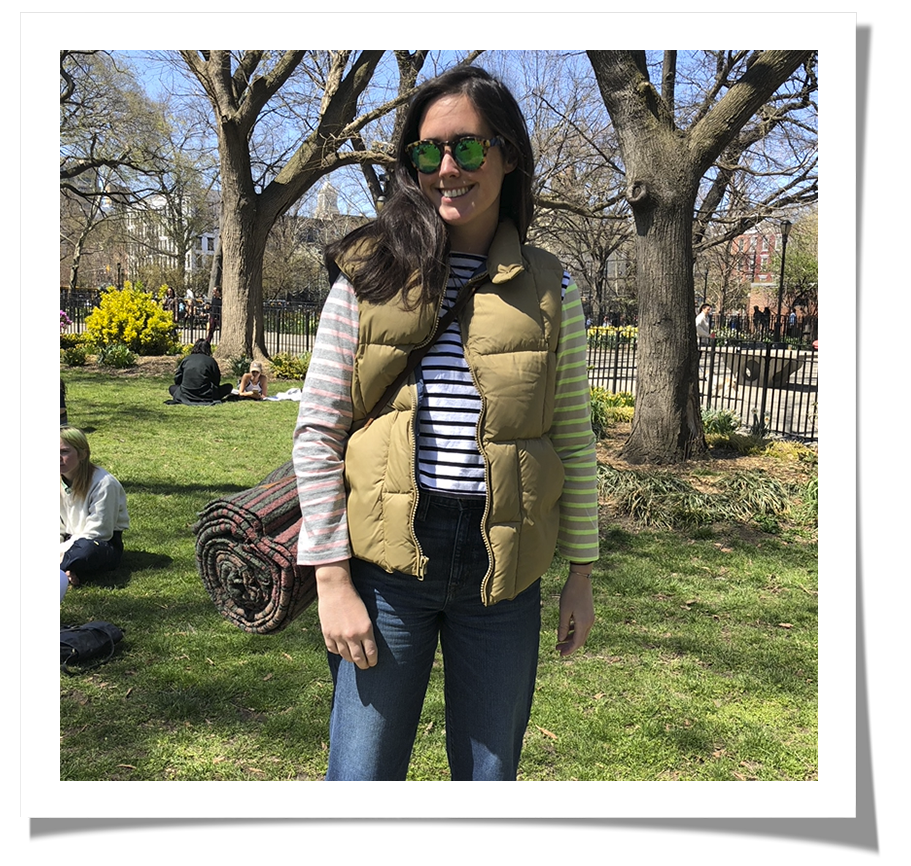5 Common Myths About Rheumatoid Arthritis It's Time To Stop Believing

Rheumatoid arthritis (RA) is a progressive autoimmune disorder that primarily attacks tissues around the joints, causing chronic pain and inflammation. That might lead you to believe that the main symptoms are creaky wrists or knees. Or maybe you’ve heard that RA only affects older people (after all, everyone’s joints get a little creaky with age, right?). But none of these things are actually true.
To cut through the myths, we chatted with five women who are living—and thriving!—with RA, and who’ve learned a whole lot since their own diagnoses. Here are the biggest misconceptions they say people have about RA, plus, what they think people should know to support affected people in their lives, or get a stronger handle on their own condition.
Myth: RA only affects the joints
Fact: Joint pain and stiffness are far from the only symptoms.
“One big misconception is that RA only damages the joints, but this disease affects your major organs, including your lungs, hearts, and eyes,” says Danielle Bryant, founder of the RA nonprofit Make It Count.
In 2015, Bryant, who’s lived with RA for 28 years, developed a complication called rheumatoid lung disease—chronic airway inflammation and chest fluid buildup that causes coughing, wheezing, and trouble breathing. The issue has led to several bouts of bronchitis and pneumonia and has forced Bryant to use breathing medications and a nebulizer. “It’s one of the hardest aspects of managing my RA,” she says.
Despite this, she continues to be as active as she can—playing softball, cycling, and even completing (and often winning!) marathons and triathlons. “RA is merely a piece of who I am,” she says. “I don’t let this disease define me.”
Myth: RA only affects older people
Fact: It can strike at any age, according to the CDC.
Take Jill McLaughlin, who was just 21 when she found out she had RA—and even then, her doctors suspected she might have already had it for years.
Dealing with the diagnosis as a young adult wasn’t easy, and McLaughlin worried about her condition getting worse as she grew older. “When I would go in for my appointments, I was by far the youngest one in the office. I’d see very older people who were immobile, and I’d get very upset,” says McLaughlin, a publicist in New York.

Now 32, she’s focused on controlling her current symptoms while protecting her future health. She gets regular blood tests to check that her medicines aren’t affecting her liver, and works to address ongoing joint pain to ensure her joints aren’t becoming permanently damaged.
“I’ve accepted that I have to work at managing it,” she says. “Some days, that means I have to wear supportive sneakers instead of flats or boots, a back or shoulder brace, or no rings. I just keep adapting to what works best for me.”
Myth: If someone isn’t talking about their RA symptoms, they’re not hurting
Fact: RA can cause excruciating pain—but other people can’t always tell.
“I’ve had people tell me that my disease must not be so bad because I’m very active,” says 57-year-old Wendy Rivard, an avid runner and RA blogger.
Rivard learned how serious the pain could be when she was diagnosed with RA four years ago and immediately thought back to how her grandmother handled her own RA when Rivard was a child. “She had multiple joint fusions due to the damage in her joints, but she never complained. I never knew she was in pain,” Rivard says. “I think she was determined not to let her disease stop her from living her life.”
Taking inspiration from her grandmother, Rivard tries not to let RA slow her down either. However, she’s learned the value of letting others know how she’s feeling. “RA is an invisible disease, so the stoic approach doesn’t help people understand how you’re feeling,” she says. If she’s not well, she’ll let friends or coworkers know or share it on social media. “It’s not to complain, but to increase awareness.”
Myth: Once a particular motor function is lost, there’s no getting it back
Fact: The right treatment can help you regain motor function and get back to doing things you enjoy.
By the time Karen Tibbals was diagnosed with RA at 65, her ability to complete simple, everyday tasks was greatly diminished. “I couldn’t walk normally, I couldn’t open cans, I couldn’t cook or clean or do any yoga pose that involved supporting my body. I couldn’t even type,” says Tibbals, a writer and speaker from Washington Township, NJ whose latest book, Persuade, Don’t Preach, came out in May.
Though Tibbals had long been a fan of holistic healthcare before her diagnosis, she knew that embracing modern treatment options was a must for her RA. “People put off treating with prescription medications and end up with damage to their bones like deformed fingers,” she says.
Not only did finding the right treatment stop Tibbal’s pain and function from worsening—she actually regained most of the abilities she had lost. After a few months of using the medications her doctor prescribed, her symptoms disappeared entirely. “The drugs work well, and I can walk without pain. RA doesn’t really impact my life at all now,” she says.
Myth: Lifestyle changes won’t improve the pain
Fact: The right ones have a huge impact.
Patty Deters started taking an RA steroid when she was diagnosed with the disease at age 50. But in a lot of ways, the medication made her feel worse instead of better. “My weight steadily climbed, rendering me inactive because I was exhausted. I said no to every activity because I simply didn’t have the energy,” says Deters, who chronicles her journey on Instagram.

Unhappy sitting on the sidelines, at age 54 Deters decided to make a change. Hoping to lose some weight, she met with a personal trainer who, in addition to leading her through an exercise program, also suggested some tweaks to her diet. The two-pronged approach helped her get leaner—and also improved her symptoms. “As I replaced processed foods with whole foods, Diet Coke with water, and reduced my overall sugar intake, my inflammation levels went from high to extremely low,” Deters says. “My energy levels increased and I began to say yes to life again.”
Fast forward four years later. Now 58, Deters has lost 75 pounds and has completely reclaimed her life. Trading the steroids for other medications, sticking with a minimally processed diet, and staying active by swimming and hiking have made it so her symptoms no longer stop her from doing what she enjoys. “My husband and children love that I now say yes to family adventures instead of watching from the sidelines,” she says.
You Might Also Like


